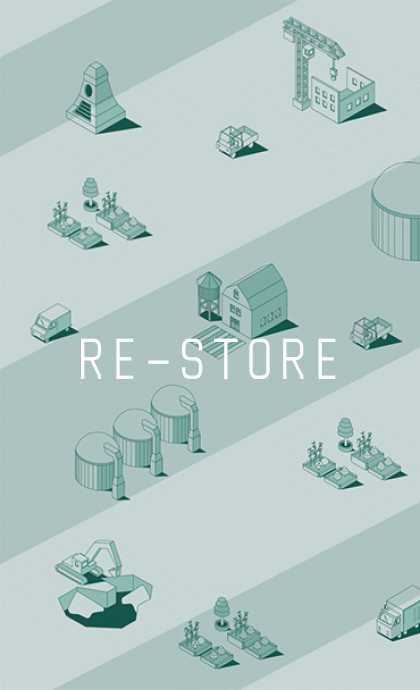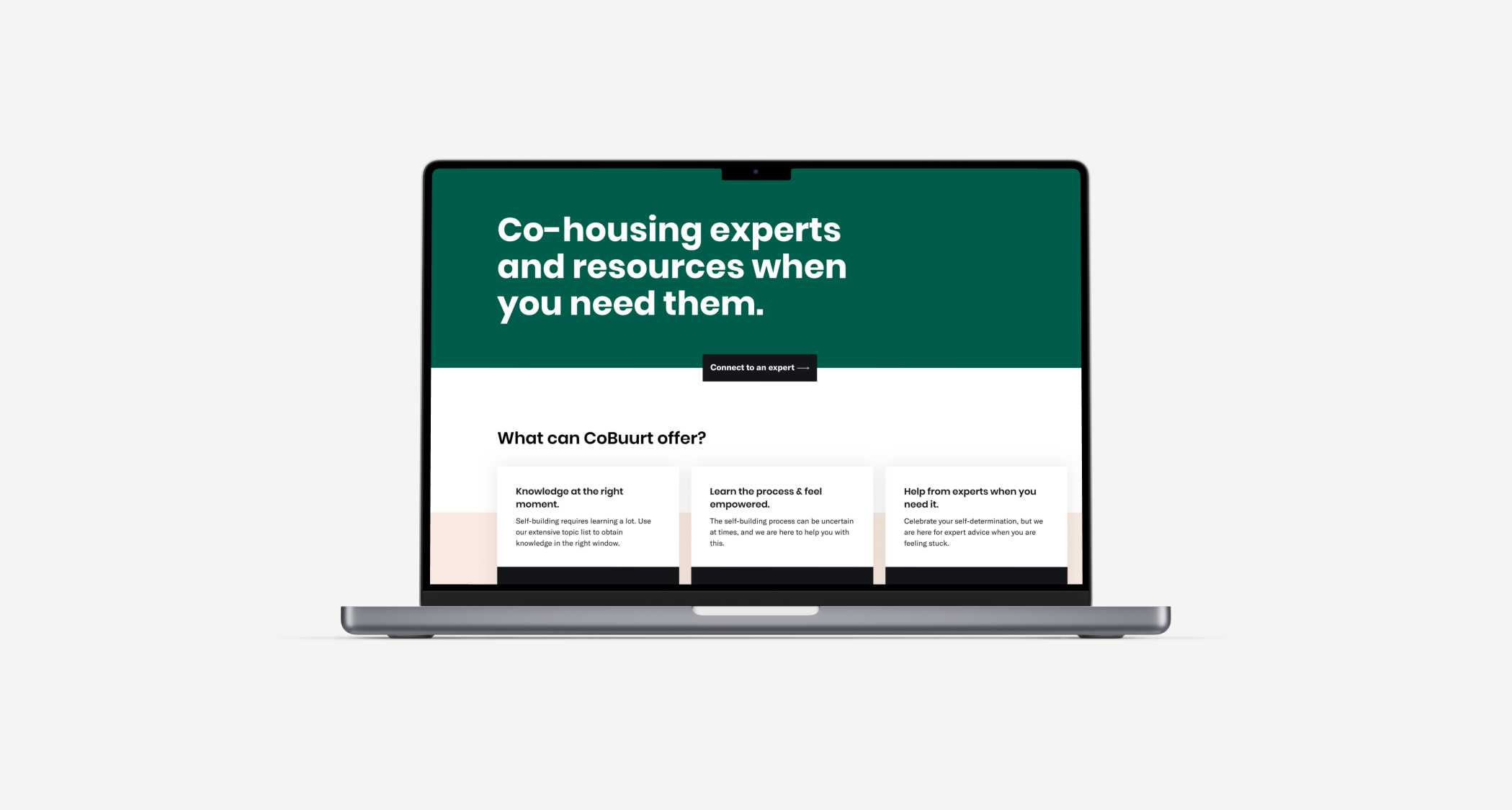
Cobuurt
OVERVIEW
Have you ever though of building your own home? Cobuurt helps you out on the journey of making your housing dream come true. It is a website featuring a set of resources for people interested in building their own home
OUTPUT
Website concept
ROLE
UI design, prototyping, user research, user testing
YEAR
2020
CLIENT
Space & Matter
TOOLS
Figma
Introduction
For this 5-month project, my team of 4 developed a website concept dedicated to people interested in building their own home.
We named it Cobuurt ("co" as in "cooperation", and "buurt", which is the dutch word for "neighborhood").
The website is meant to provide resources and helpful links, but also help self-builders connect with experts that might be required for a building project, which could be a mason, but also a lawyer.
Background
Co-housing are communities of private homes with some shared facilities.
Some of the benefits of living in co-housing communities are increased social connectedness and a more sustainable (ecologically and economically) way of living through shared resources.
Our client, STEC (Smart Technologies, Empowered Citizens) are researching ways for people to co-create their own neighborhood and city. They were working with ONE architecture and Space & Matter, two architecture studios interested in how digital tools can bring people interest in co-living together.
Our brief was formulated as an exploratory task of discovering examples of how one might enable people to create shared ideas for building processes
Discovery
Our initial research consisted of building an understanding of the vast field of co-housing. We started out by exploring what digital tools are already available for people interested in building and looking for co-housing.
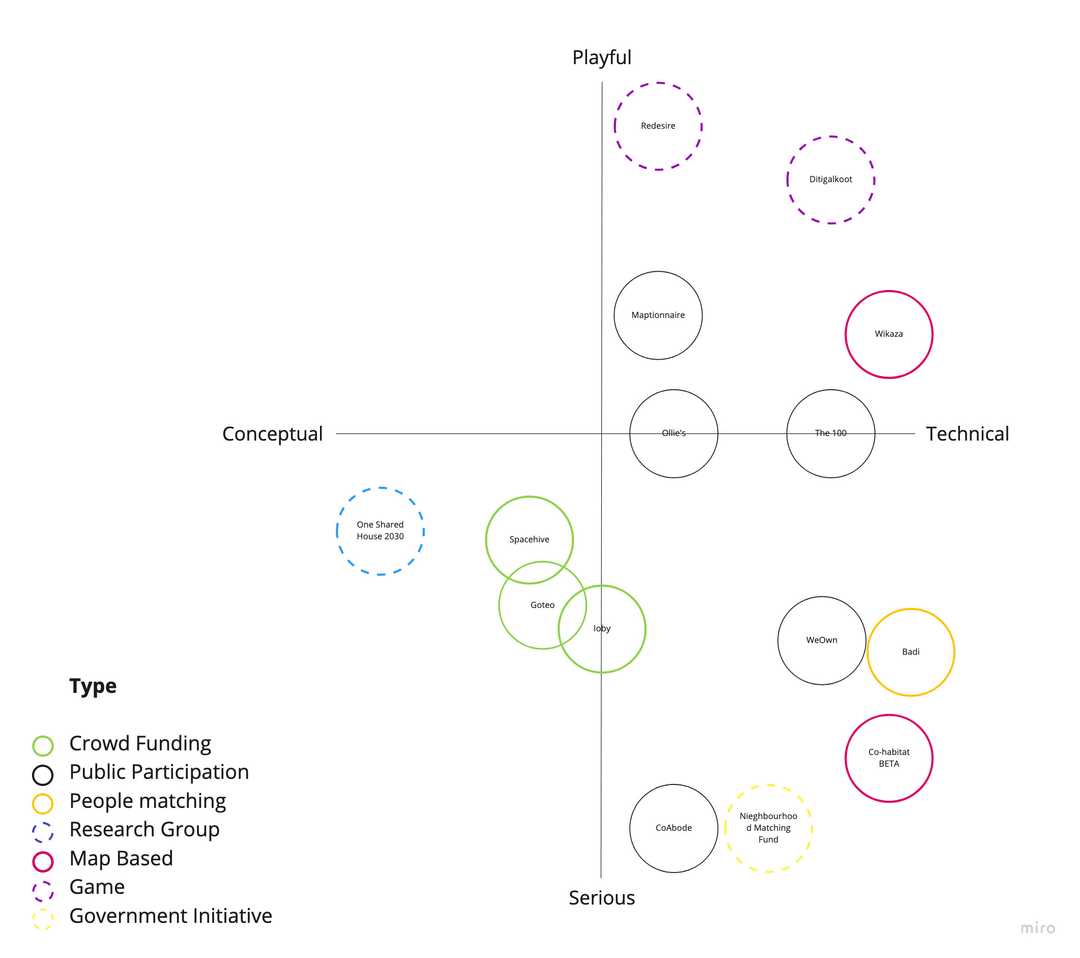
We started off by getting in touch with some of the established co-housing groups in the Netherlands to understand what they struggled with during the process of building their community home. Based on the interview findings, we could generate a user persona to help visualize who we were designing for.
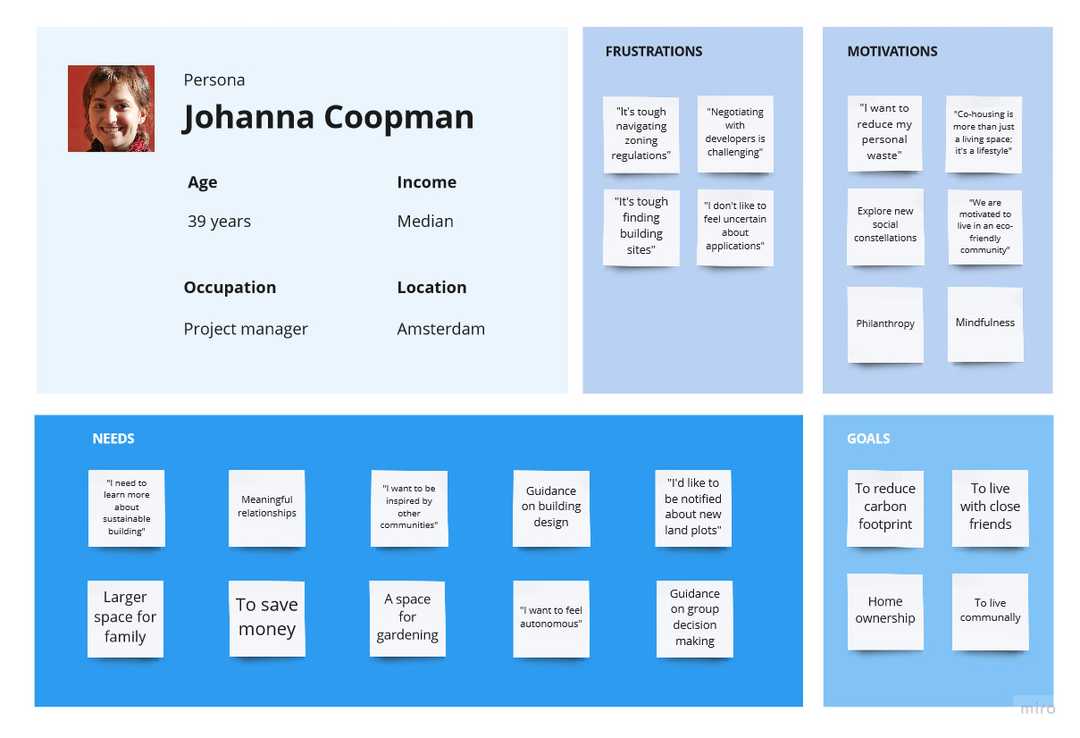
Furthermore, we made a user journey map that would illustrate path taken by someone building their co-housing project.
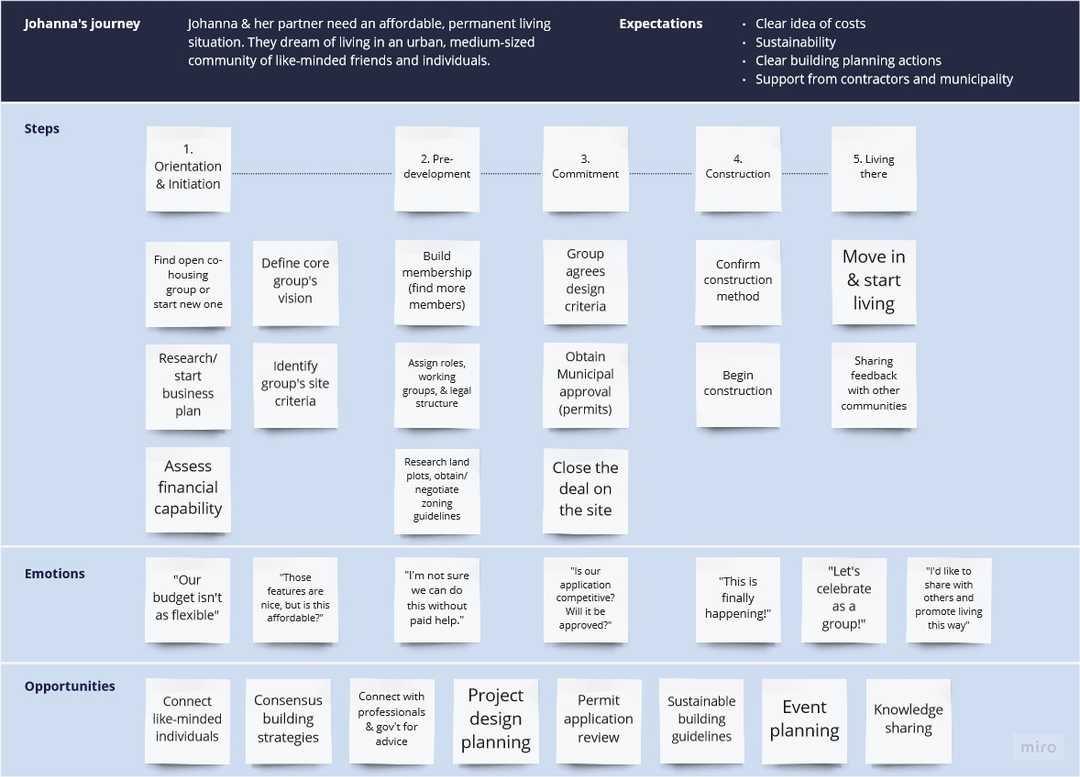
Based on our own findings, as well as complementary research insights from STEC, we could reach some conclusions:
- All co-housing groups sought advice from professionals- Some co-housing groups use online voting tools to reach decisions
- All co-housing groups wanted to build and live sustainably
Ideation
Based on the business needs of our client (connecting people interested in community living), some of our initial ideas revolved around a social media concept for people interested in co-housing.
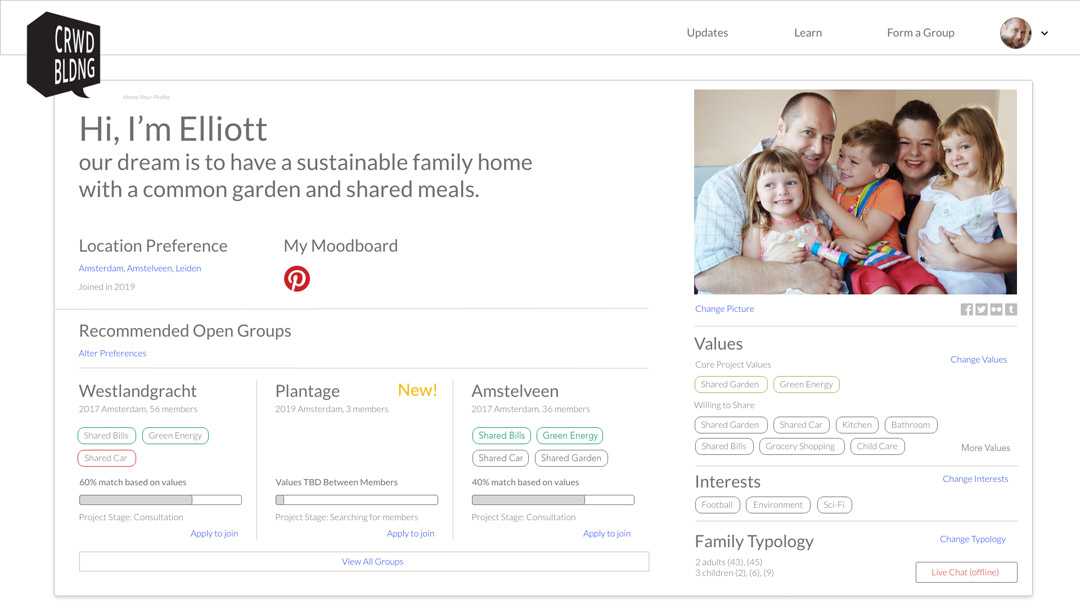
Another idea was a knowledge hub for user to share everything relating to self-building and co-living. Novice self-builders can connect with more experienced ones to ask and get tips.
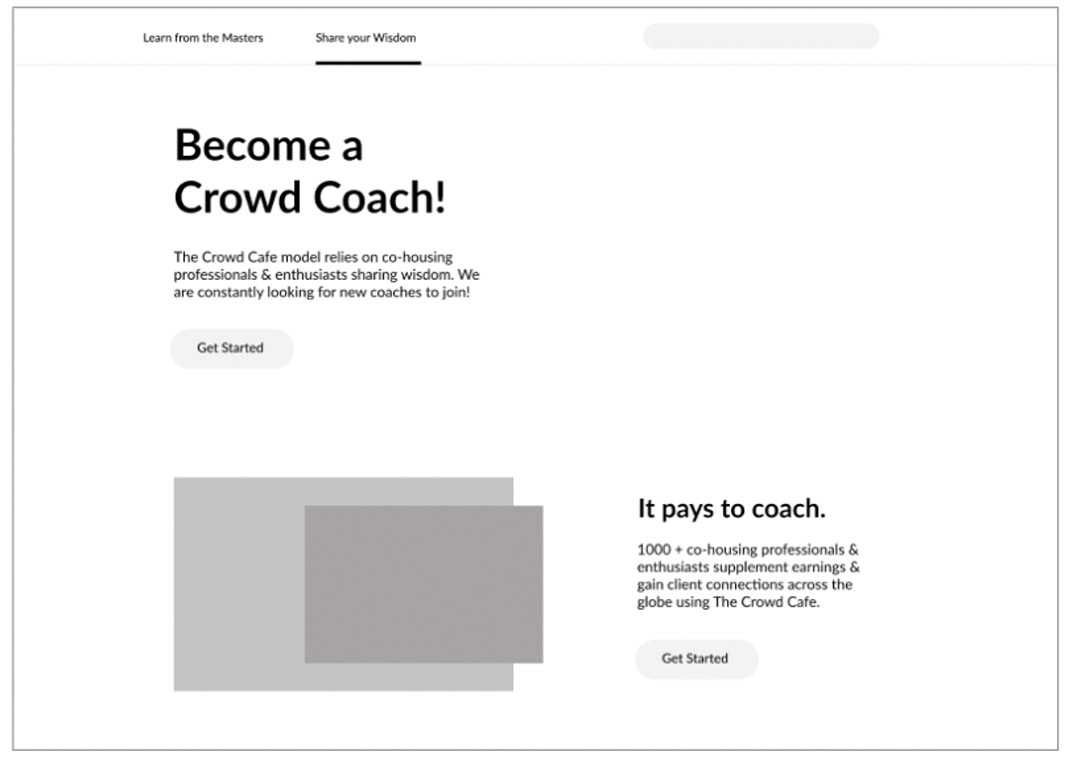
Further research proved that finding community members, establishing common values and organising the chores is just a small part organizing a co-housing project. Meaning that a social network for the community is not crucial.
Aquiring knowledge of the process; finding a ground, legal paperwork, and connecting with the right experts seemed to be more important for our target users.Validation
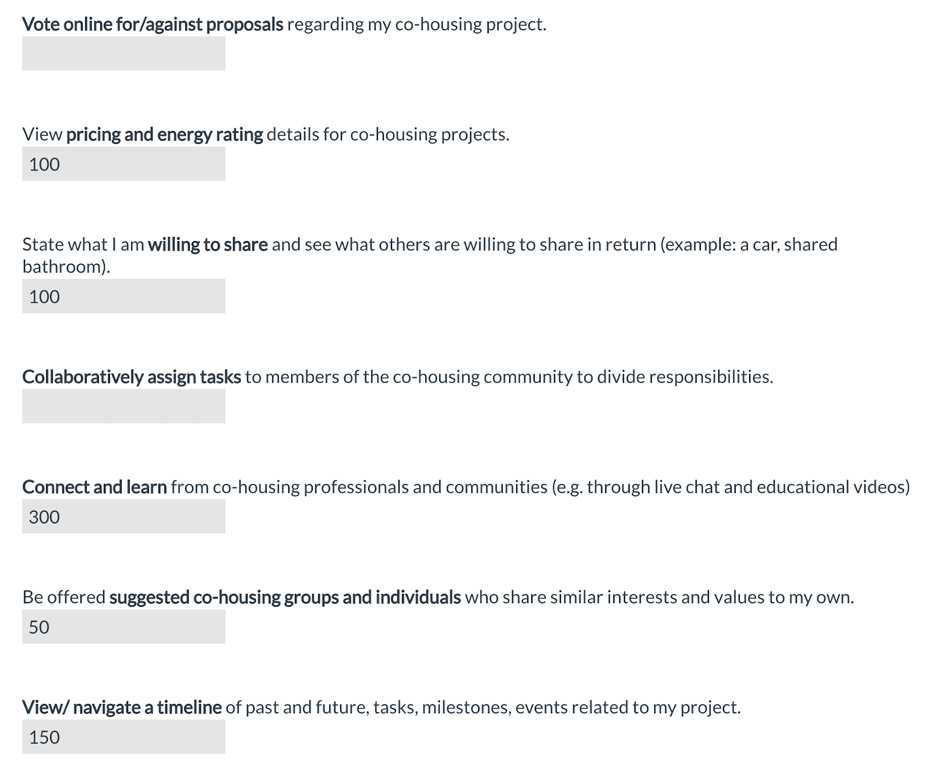
To find out which concept would be the most useful for our future users, we decided to make a feature-ranking survey, where the users could spend a fictional sum (out of a maximum budget of 100€) on the features of their choice. We sent this to members of co-housing groups that we've been in touch with.
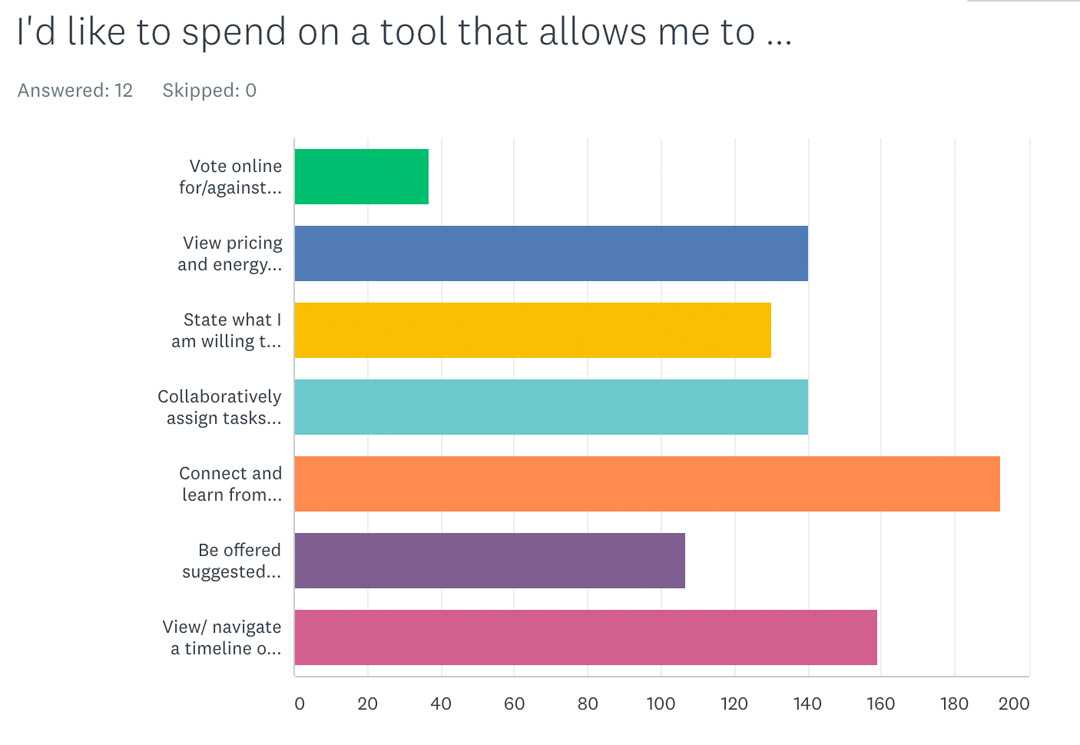
Based on the results from the survey, a tool that allows one to connect and learn from co-housing professionals and communities was the one most in favor.
We started looking at how we can build a platform centered on knowledge sharing and connecting with experts.
Prototyping
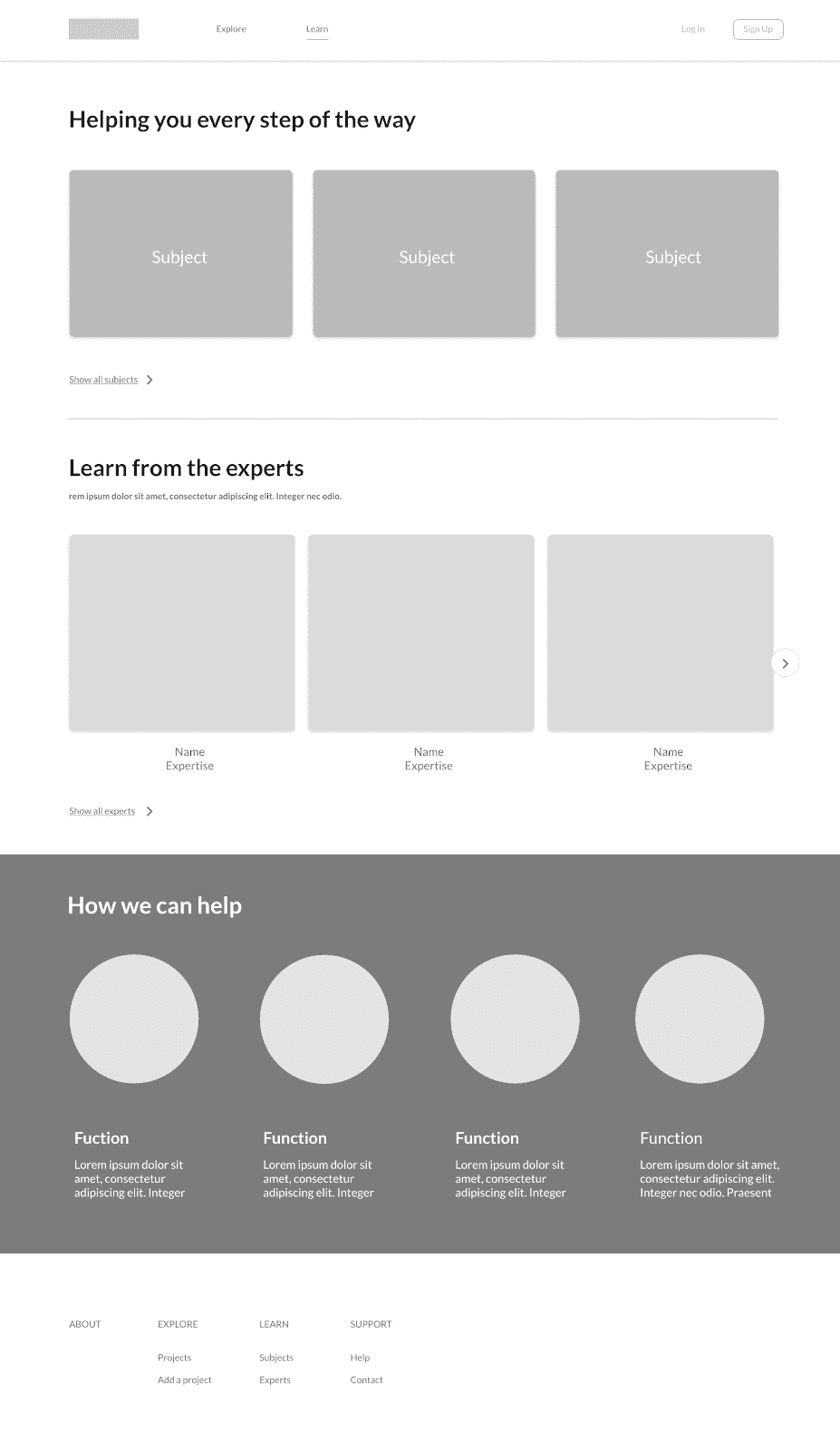
We iterated, sketched more on our platform, until we had a prototype that could be tested in order to gain insights about the information architecture.
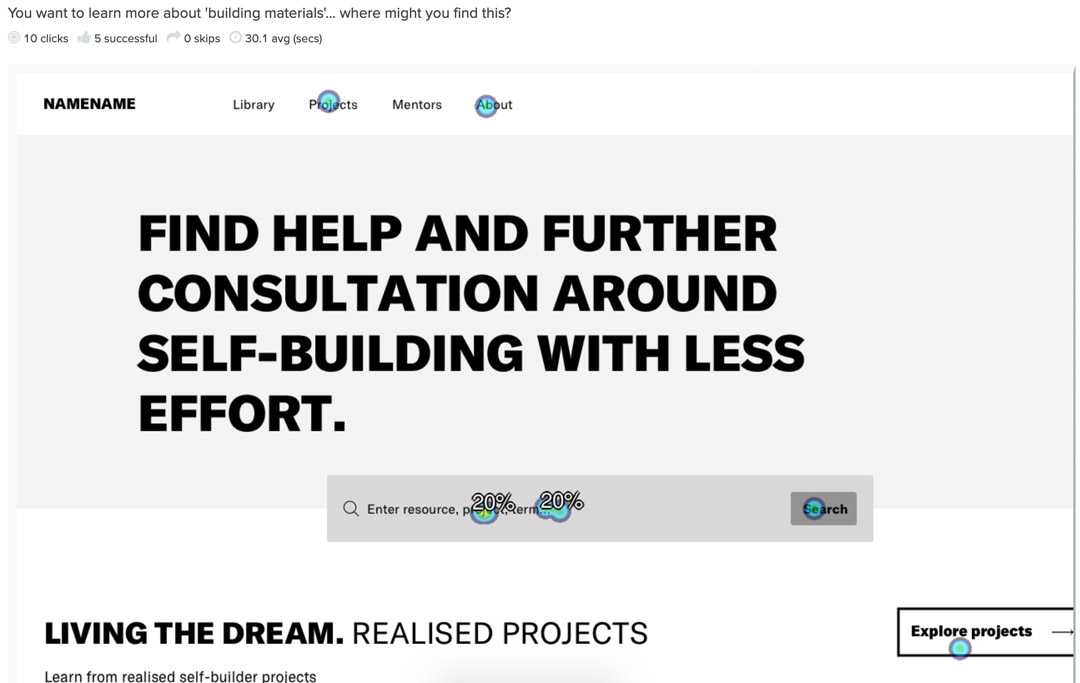
After developing wireframes, we wanted to make sure the site would be easy to navigate, and that the call-to-actions were appropriately placed. We tested an early wireframe using OptimalWorkshop - we gave survey testers some specific tasks of what to look for, and could review the results from a heatmap of where users clicked. According to the results, only minor details in the information architecture needed change.
Further testing was done through aloud-sessions, where the users would click their way through our prototype and simultaneously give feedback.
Ecosystem map
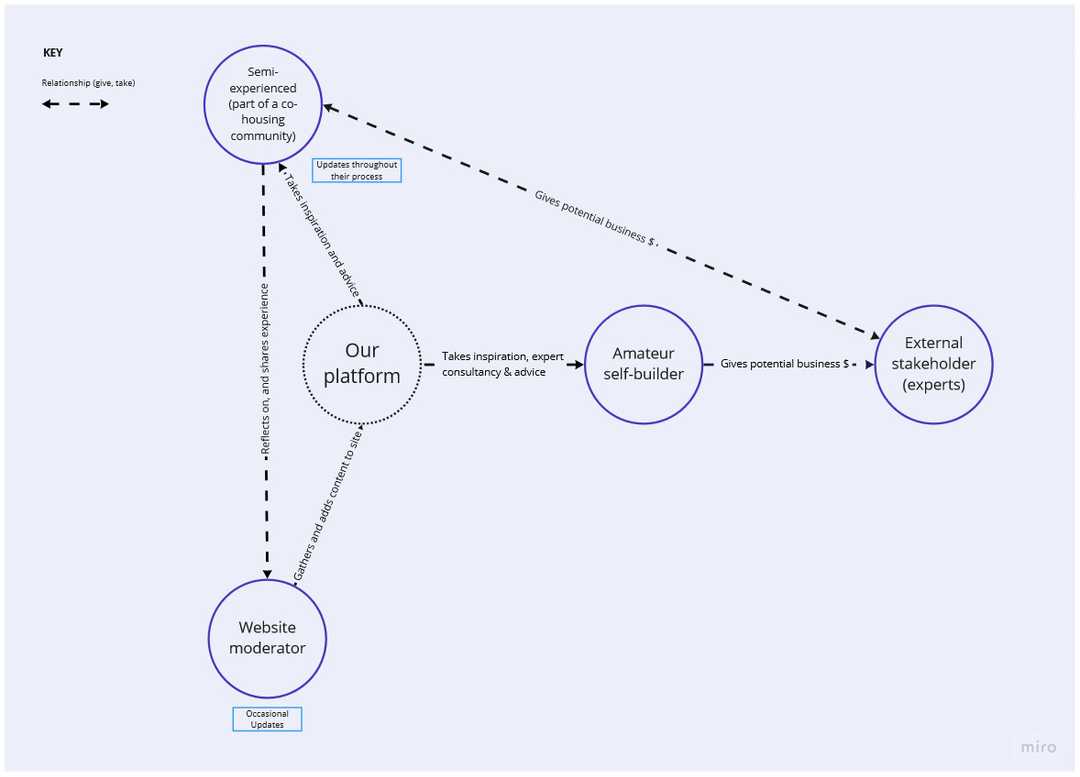
As we were fleshing out the structure of the website, we also made clear to our clients how the service would work out. To better illustrate the relation and value exchange on the platform, we made an ecosystem map to describe the relationship between:
- moderators (adds content)- experts (that through sponsorship can provide their service on the platform)
- users (the people searching assistance and tips for their co-housing project).
This was shown to our client to further elaborate and concretize our concept.
Solution
Our finished solution is a website (prototype) that can assist self-builders in forming communities and provide the necessary know-how of building your own house . The platform works as a partnership-style model, where businesses related to building can become sponsors and advertise their services through the website - potentially connecting with new customers.
The UI has a color palette in green and soft beige that gives a feeling of earth and sustainability.

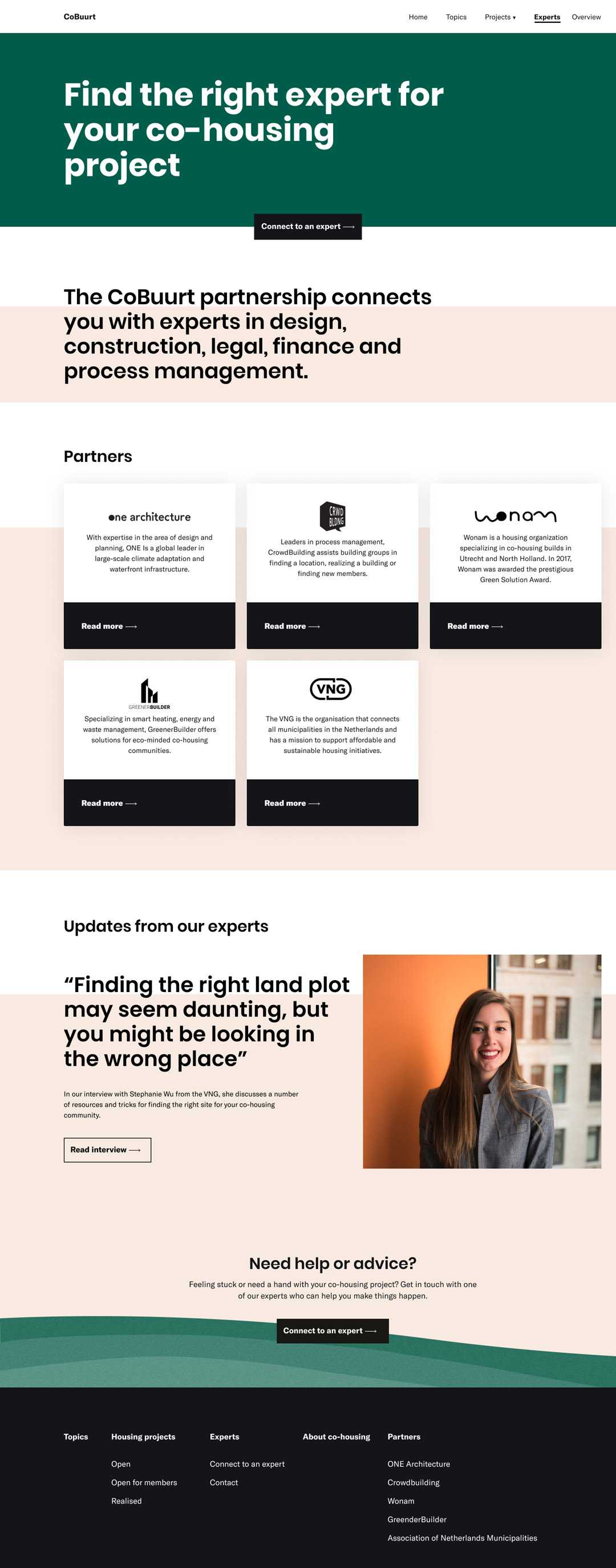
Conclusion
What can Cobuurt offer?
- Advice and knowledge for self-builders, through articles on different topics.
- Expert guidance by being able to connect with different professionals relating to building and co-housing.
- A clear overview of the self-building process, including all necessary steps.
